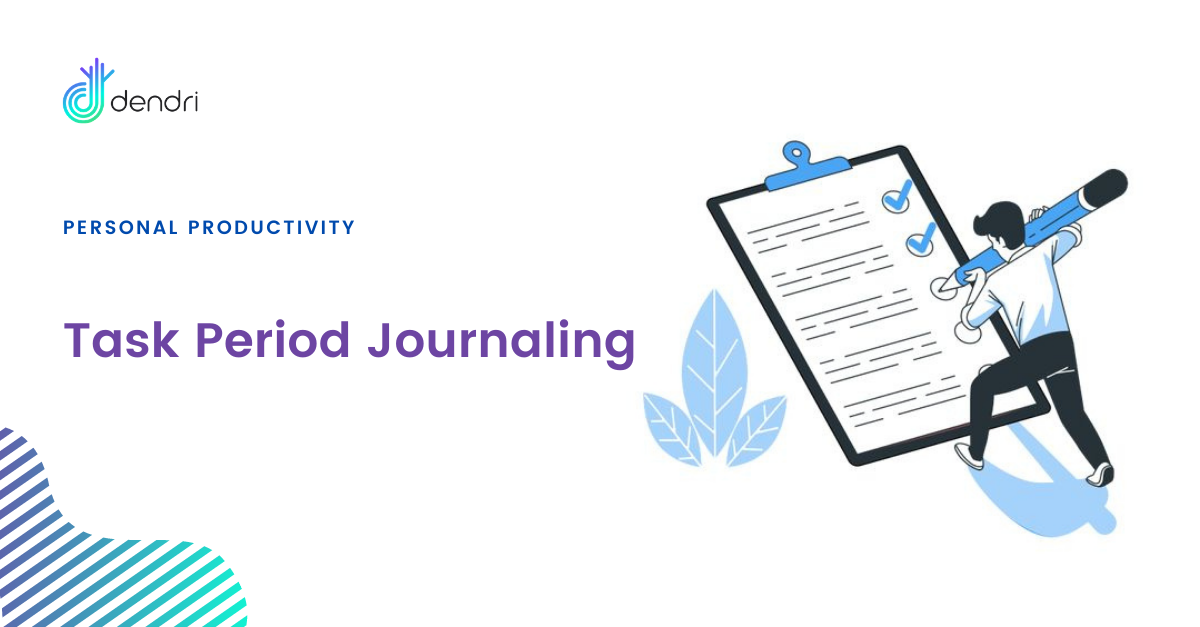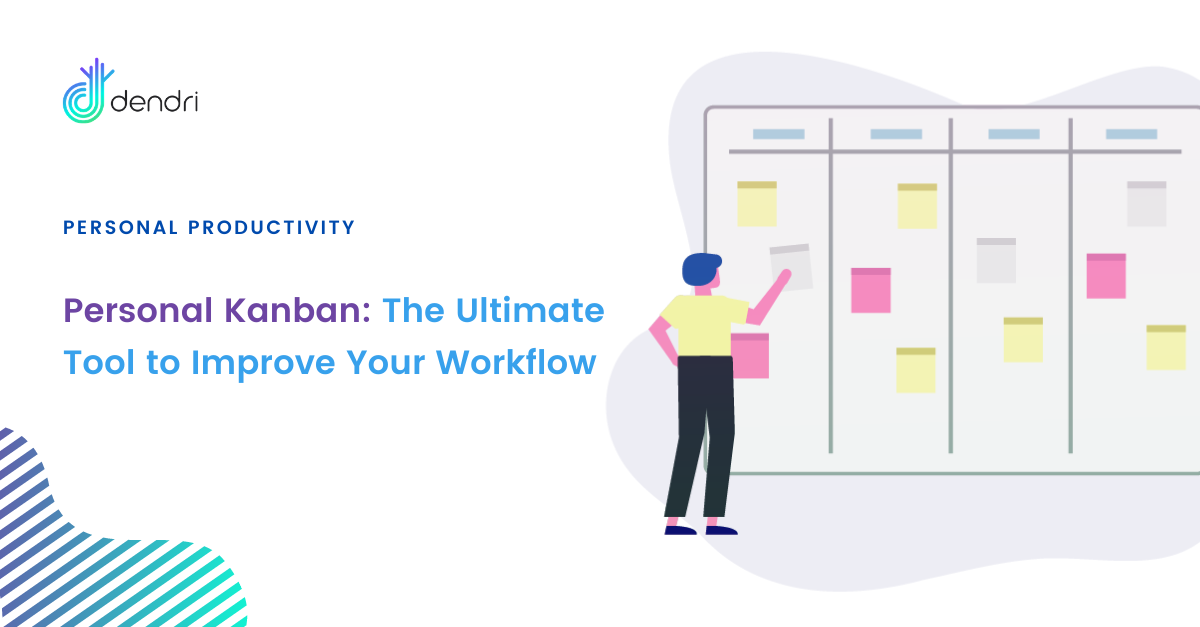
This article has taken me days to write. That’s because I’m just not very good at organizing myself or my thoughts. At work, I’m lucky enough to have incredible help, but that help, just like me, is struggling with the madness that is modern life in the age of COVID. I had to get myself together. I did it by developing “Task Period Journaling.”
The biggest problem I had with getting things done isn’t in getting organized, or listing all of my tasks. It’s not even setting aside the time to do things. Resolving to do things is easy. It’s the equivalent of buying a new pair of expensive running shoes just after resolving to take up running. But, actually going out and running on day 2, 3, and 4 is where it can fall apart.
We know this. When you want to start something, you should just start doing it. But sticking with it, and understanding why that fails, is a lot harder.
The Habit of Setting goals.
When I sit down to put together a task list, I’m setting my intention each day. Writing down my tasks and what needs to get done. Some task periods are longer, maybe a week, maybe a long-term project, but in the end, they all start the same way: Just. Take. Action.
But, just taking action doesn’t work as often as it does. Because we are wired to hate failure, some tasks never get done. Some habits never get formed, and many projects never get finished.
What I needed was a way to teach myself to spot why some tasks are so harder to finish than others, and why some habits just never get off the ground.
I tackled this for myself with Task Period journaling, which is now built into Dendri.
Does the world really need another productivity framework?
Absolutely! We are all unique animals. No single methodology is going to work for all of us. This is what works for me.
I needed something that was unopinionated to my blockers and allowed for me to journal my mental state as easily as I recorded what was happening externally when I was or wasn’t getting a task done.
By contrast, a daily intention journal are designed to proactively set your “purpose” for the day based on behaviors (rather than tasks) that will help you reach your goal. In contrast, task period journaling is heavier on the “journal” part focusing on your history and reflecting on the results so you can modify and improve. In other words, I think an intention journal coupled with a task list is good for people who can already set their mindframe, and know what that behavior should be. Task period journaling is for people like me, who have no idea why my work isn’t getting done and need to hold a mirror up to themselves.
Just Write it All Down!
In the Task Period system, I acknowledge and allow that building a task list may not be a natural habit, and that I may not know on day one how many or which tasks to record, or how to categorize tasks into buckets of where, why, and when. So, I started by just writing it down. Then I labeled it.
It’s as simple as this:
When you start a task list in the morning, draw a line through the middle of the page and another line to split one section so you have three areas (they don’t have to be the same). Now just “write it all down” as well as you can in one half, creating your todo list. This is part of establishing the habit of organizing yourself. If you’re already a task ninja, then just write it down doing what you know. Either way, you’re trying this out because you haven’t yet reached enlightenment and ascended to the cloud of task perfection.
Once you’ve got your list take a look at it and give your tasks a label. I personally like to use Work, Home, and Play. Work and Home are self-explanatory. Play is related simply to the things that make you happy, that fulfill you in some way. You could also call this “Self.” The reason it’s different from “Home,” is “get groceries,” or “paint the ceilings” could be “home,” but they are not activities that are going to improve your core self. These might overlap, but I like the exercise carving out these buckets. “Work Life” balance is limited because work is part of life, and life doesn’t tell us anything about what’s important.
Work Home and Play offer a starting point to intentionally consider the nature of your tasks and to build a balance over time. Don’t worry if all of your tasks are “work.” Part of the point of a Task Period journal is to show you over time where your energy is going and how to redirect it to a more balanced and productive life.
Unlike the Eisenhower Decision Matrix, these broad labels are unopinionated and not about what to delegate. This is a process and we don’t yet know which tasks are urgent, important, or senseless busywork, which the decision matrix focuses on. So instead, we’re characterizing them in big buckets that will help us learn how to live a more balanced, mindful life, while still being productive AF.
The other thing that I’m not worried about just yet is time. In other words, while we’re breaking tasks up for the day or week, or We’ll get there, and Task Period journaling is compatible any time-management technique you want to use, and enhances them. For me, I had to learn to walk before I could run. I’m heavily influenced by kanban thinking with flow and limiting my work in progress critical to the way I stay organized, so I’ve infused my journaling with that type of thinking and try now to limit my tasks to a fixed number for each category. Anything I don’t finish carries over. I can’t take on new things unless I get things done.
Just Start Doing and Journal Your Progress
Once you’ve got your task list on half a page, just start doing as best you can. When you complete a task, write down a note about how it went in the other half of the page. When you are are interrupted, write down why. Don’t be afraid to call out Steve from accounting for calling you six times about an expense report. If you get through a day and leave a lot of tasks uncompleted because you had a bad night, write it down. If you finished a task that’s been dogging you for weeks and feel like you could conquer the world? Write it down. If you got something done but it felt like unimportant busy work, you get the idea. In Task Period journaling, the context of what’s happening when you are or aren’t getting things done is critical.
When the Period is Done No Backsies!
Once your period is over, it’s over. Turn the page. Literally. Don’t add any new notes to the journal and don’t go back and complete tasks. If a task didn’t get done and you still need to do it, carry it over. You can always indicate in your next period’s journal that the task is a carry over. But, you can’t go back and complete tasks or add how you were feeling to the journal.
Reflections
That’s what the third area is for. In addition to my tasks and journal, I left some unused space on the page for a reflection journal of sorts. Task Period journaling only works for me if I take these snapshots and reflect on them over time. Not just one-by-one, but over time, in this area, the third area, I come back and revise my thoughts, and record my resolutions. For example, you speak to your boss about Steve from accounting. Come up with an action plan. Then, record that. When you make your next list, learn from that resolution, and plan your work tasks that need focused work for those quiet hours.

I started adding to my reflection journal, then I started looking at where my task priorities (my labels) were falling. At the beginning I said, don’t worry about the breakdown of work home and play (or however you’ve chosen to label your tasks). But now, I saw a whole lot of work, and very little in my mental space to take care of myself and be engaged at home. COVID changed all of this and I got better insight. On my list, I only had to “do” work. So, I was always focused on work. I reflected and added things like “play Yoshi’s Crafted World with the kids,” “Catch frogs,” “go for a run.” Make sure that you are being productive, and being happy.
Some people don’t form habits easily. For others, they just do the thing for 30 days and it becomes part of them — forget those people. If one of your tasks is “meditate daily” and that task isn’t getting done, Task journaling and following up with your reflections will make you push yourself to accountability. Eventually you’ll run out of excuses and just do the thing.
There isn’t much more to it than that.
Here are the steps:
- Start a Todo journal with three spaces: Todos, Notes, and Reflections.
- Choose a period, for example, daily (there’s nothing stopping you from also having longer periods for bigger projects, but you need an end-date to the period so you can reflect).
- Write down all of your Todos without judgment or preconception. Label each task as related to your work, your home, or your self-care.
- As you work on your tasks during the period, record your feelings, observations, blockers and successes. This is your task period journal. Don’t hold back, the goal is to get as much info in the moment as you can.
- At the end of the period, stop. Don’t keep working on the list (you can put the same tasks in the next period if you have to).
- At regular intervals, reflect on your accomplishments and struggles and note in your reflections how you’ve tackled your biggest blockers or addressed an imbalance in your work, your home, and your self care.
- Build those reflections into your future periods.
- Repeat.
- Never stop improving. Mastery doesn’t mean completion. Always improve. Be imperfect, and fail. These are more chances to learn.
If you’re familiar with software development, some of this will be familiar as encouraging agile continuous improvement. That’s by design. You’ll also realize I don’t prescribe a method of accomplishing tasks. For example, time-boxing, or pomodoro technique may work really well for you as you continue your efforts. The purpose of Task Period journaling is to give you the tools and the historical information you need to make those decisions for yourself. To test those techniques and report back to yourself until you find something that works. From there, you can continue to build and improve.

I hope this helps. If you get organized, or understand why you aren’t, reach out to me on twitter. In the meantime, check out the Dashboard in Dendri, which now includes a task period journal at the top.
Related Posts

Personal Kanban: The Ultimate Tool to Improve Your Legal Workflow
The ultimate step-by-step guide to getting your work out of email and into a visual system that will save you time and increase your productivity. What is a Kanban? In the early 1940s, Toyota was…
- Mar 30
- 6 mins read


How To Unknowingly Sabotage Your Law Firm Employees
As an incoming attorney, you are subject to the random discovery of pre-set workflows and tech stacks your law office has already adopted. This unilateral focus on unified workflows can do you an injustice. Explore why today.
- Mar 17
- 4 mins read
Categories
Latest Post
Friday 7/2/21 updates
- July 2, 2021
- 3 mins read
Elevate project tracking with Dendri’s new Gantt Chart
- May 8, 2021
- 3 mins read
Personal Kanban: The Ultimate Tool to Improve Your Legal Workflow
- March 30, 2021
- 6 mins read
How To Unknowingly Sabotage Your Law Firm Employees
- March 17, 2021
- 4 mins read




